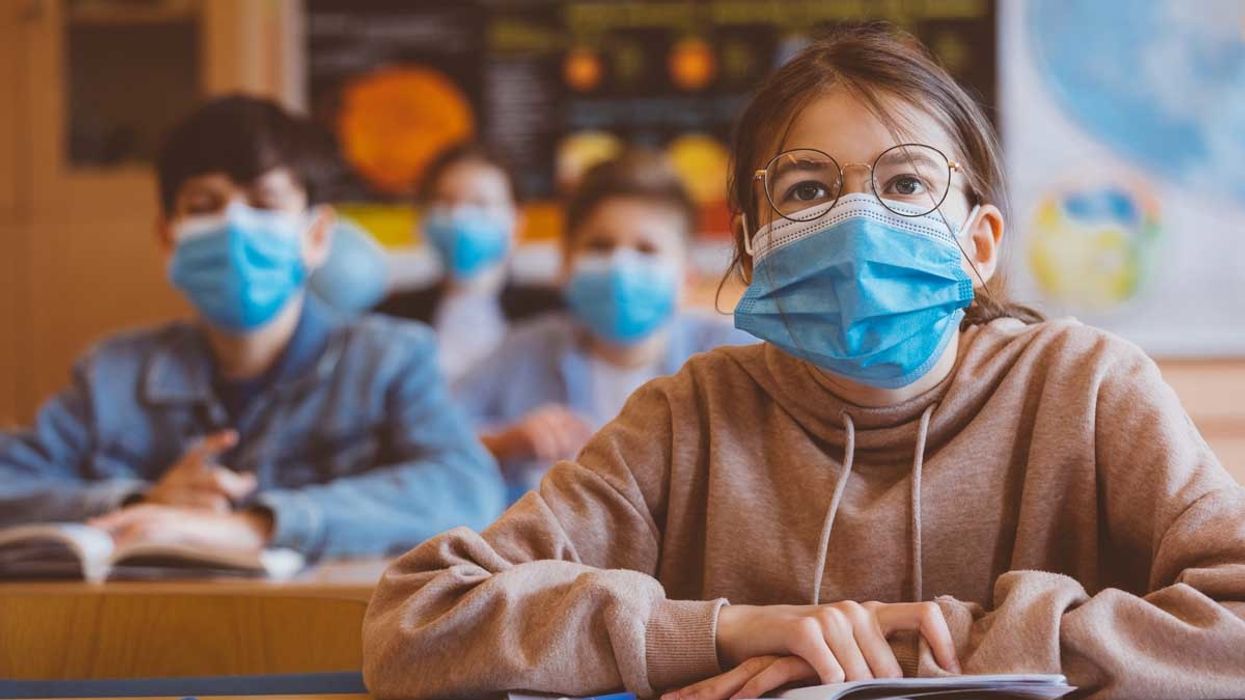
izusek/Getty Images

Open the schools
It was one of the most consequential policy debates of our time. Do we send our kids out to school in middle of an epidemic that poses no meaningful risk to children and younger people? The teachers' unions fought tooth and nail to get many states to keep their schools closed. They even held mock funerals to protest the openings. So, over a month into the opening of schools in the areas where they failed to keep them closed, did we experience mass funerals?
"Feared coronavirus outbreaks in schools yet to arrive, early data shows," read a recent title from the Washington Post. Kudos for their willingness to return to the issue rather than dropping it and moving on to the next panic-inducing prediction like a drive-by shooting. In the long and thorough article, the authors state the obvious: "Public health experts have found little evidence that the virus is spreading inside [school] buildings, and the rates of infection are far below what is found in the surrounding communities."
Advocates for opening schools have made the point that not only is the virus not dangerous at all for children, but children rarely spread the virus. The fact that we are not seeing entire classes and grades catching the virus, but rather some isolated cases here and there, demonstrates that the children likely get the virus from home and would likely have contracted it anyway, but are not major spreaders to each other or to other teachers in school. Whereas college students have spread the virus quickly (although it is also not dangerous for them), new data from Brown University researchers shows very little evidence of outbreaks more than a month into the school openings.
While there is no complete surveillance data of all open schools, Emily Oster, an economics professor at Brown University, created a dashboard of 300 schools offering in-person classes. During the first two weeks of September, she and fellow researchers found just a 0.078% infection rate for students and a 0.15% for teachers, "much lower" than the community infection rate in most areas, such as in Texas.
According to the Post, "Teacher's unions in Texas that keep track of infections say they have been surprised by how low it was."
Well, knock me over with a feather. Studies from countries including the U.K., Australia, Switzerland, Canada, Netherlands, France, Ireland, Taiwan, and Iceland have all failed to find meaningful spread from school-age children. Sweden kept the younger grades open throughout the entire pandemic and didn't experience a single death. The Public Health Agency of Sweden found no measurable difference in outcomes for children between Sweden and Finland, even though Finland closed its schools.
The Washington Post also observes that data from 37 school districts in Connecticut, New York, and Pennsylvania that opened schools shows "there have been 23 confirmed cases of the coronavirus across 20 schools and no indication that the virus was spread in schools."
In other words, what we are consistently seeing in grade school is that, unlike in college dorms, there are just a smattering of cases here and there with no evidence of children driving the transmission. A comprehensive review of COVID-19 cases in German schools conducted by the Robert Koch Institute in Berlin found that "most school outbreaks had few cases per outbreak, with more cases among older age groups who could have been staff or other persons epidemiologically linked to school outbreaks." Additionally, they observe, "considering class sizes of usually 20 to 25 students per class the low number of cases in each age year suggests rather limited onward transmission within classes."
The bottom line is that a mere discovery of some cases in schools does not mean these kids were infected from the school setting or would have avoided getting it by being out of school. The Post cites a spokeswoman for the Cherokee County, Georgia, school district, where there were several hundred confirmed cases. "District spokeswoman Barbara Jacoby said that none of the cases had been definitively linked to in-school exposure, although it had not been ruled out in about a dozen," wrote the article's authors. It turns out it was spreading far and wide throughout the community in August.
Both during the 1957 Asian flu and the Spanish flu of 1918, it was observed that children had higher rates of contraction at home. A 2006 paper from Johns Hopkins observed, "When schools closed for a winter holiday during the 1918 pandemic in Chicago, 'more influenza cases developed among pupils . . . than when schools were in session.'" And that was with a flu for which children are more primary vectors for spread.
And of course, this is all a debate over negligible cases that are usually milder than the flu or strep throat or, often, even a cold. We are not seeing any greater threat to children of getting clinically ill from the virus because of schools reopening, much less fatalities. Yet there are still an estimated 711 million children out of school across the globe because so many schools are shut down.
Remember that CNN article that came out on July 30 suggesting children are mass spreaders with higher viral loads than even adults? Well, at least the Washington Post had the decency to revisit the issue now that we are living through the reality of schools opening. The paper CNN cited openly admitted that "transmissibility was not assessed in this study." Which, of course, is par for the course in an information warfare campaign driven by panic and feelings, not facts.Daniel Horowitz
Blaze Podcast Host